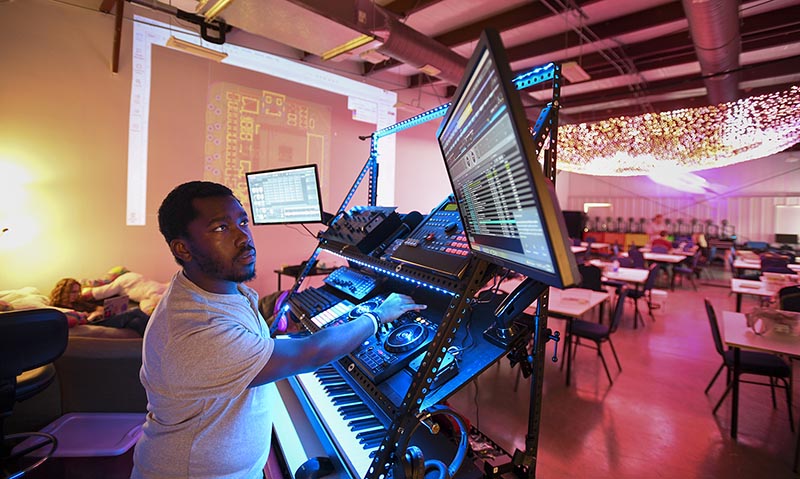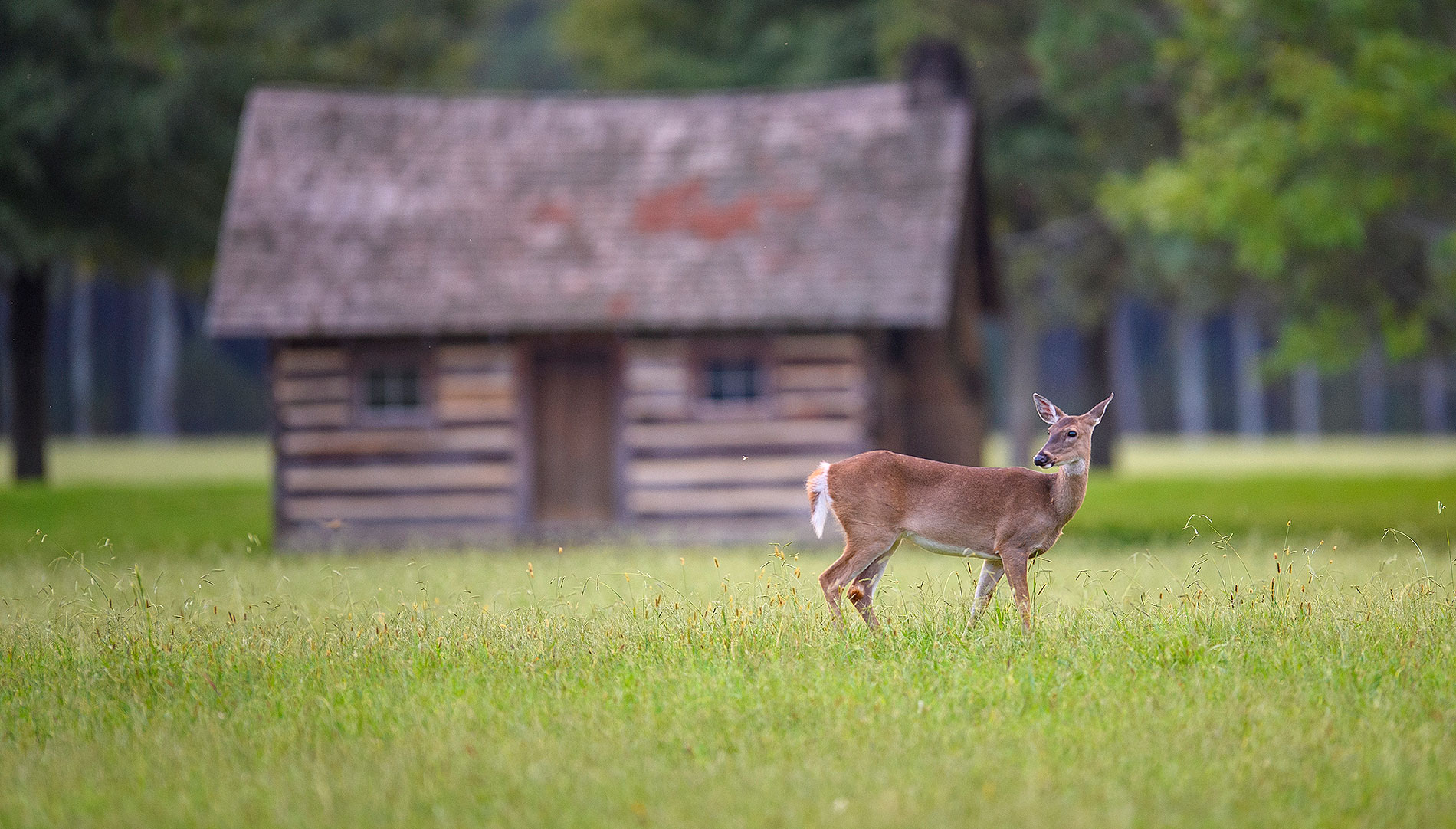Students and faculty in Berry’s fast-growing creative technologies program have more room than ever in which to stoke the fires of innovation thanks to a significant expansion of the aptly named HackBerry Lab.
Completed last spring, the new addition doubled to 7,200 square feet the amount of work and learning space available to students drawn to the interdisciplinary major, which combines aspects of the liberal arts, computer science, design thinking and business.
Located in the shadow of the Emery Barns, HackBerry’s utilitarian exterior offers little hint of the incredible levels of hands-on creativity and experimentation taking place within its walls. Inside, visitors will find a dizzying array of projects in all stages of development that highlight the ingenuity of the students and the depth and breadth of the program. These creations range from autonomous rovers and smart watches to WiFi-enabled environmental sensors and handheld digital music mixers – and countless more.
In less than a decade, creative technologies has grown from a handful of students using a single 3D printer in McAllister Hall to Berry’s 10th largest major (76 students as of late fall). It also boasts an impressive network of highly engaged alumni who leverage their considerable creativity and problem-solving skills for Nike, Ford, John Deere, Lockheed Martin and Trilith Studios, among others, when not mentoring (and sometimes hiring) current students and new graduates.
“Creative technologies students end up going into all sorts of careers,” explained Garrett Professor and former Campbell School Dean John Grout, whose vision helped launch the program in 2014. “About 17% have job titles that end with ‘engineer.’ Others are designers, teachers, makerspace managers, etc.”
The new building is expected to spur further success by providing students with a dedicated design studio in which to build and test their concepts. Previously, they had to break down their creations each night to make room for classes the following day. Now they have the storage and workspace necessary to pursue projects of even greater scope.
The addition also houses expanded wood-working and metal shops, freeing up space in the existing facility for sewing and wearable technology, a permanent photography studio, an advanced electronics lab, and an office in which faculty can work one-on-one with students to solve difficult design challenges.
Even the old shipping container once used for metal work has been repurposed as a paint studio (previously, that work had to be done outdoors).
“Our program is founded on the idea that we can always do better,” said Dr. Zane Cochran, HackBerry director and clinical assistant professor of creative technologies. “The expansion, to some extent, is us trying to make good on that goal of helping students make things that change the world and being able to do that in a more meaningful, productive environment.”
It also ensures that similar opportunities are available to students in other majors by providing the space necessary for ever-increasing levels of collaboration between programs. Last fall alone, that list included mathematics, physics, engineering, communication, theatre, data analytics, entrepreneurship and business, with more on tap for spring.




